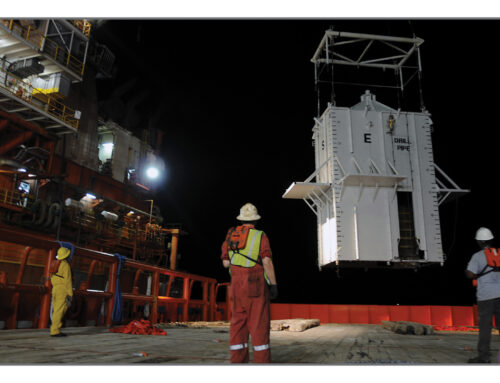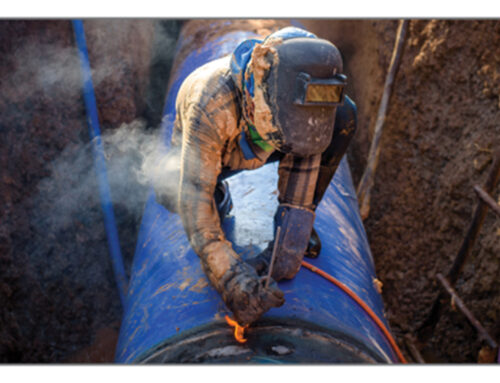The First 90 Days: The Hidden Safety Crisis at the Heart of Manufacturing’s Talent Shortage
The First 90 Days: The Hidden Safety Crisis at the Heart of Manufacturing’s Talent Shortage

Walk any plant floor long enough and the story repeats: we’re hiring faster than we can properly onboard, veterans are retiring faster than we can replace them, and the newest people on the line are the ones getting hurt. We talk about “the workforce problem” and “the safety problem” as if they’re separate. They aren’t. They’re the same system showing us two sides of one reality: when headcount is tight, risk climbs—especially for people in their first weeks on the job.
The scale of the staffing challenge is real. Between retirements and reshoring, the U.S. will need roughly 3.8 million new manufacturing workers over the next decade, even as Gen Z steers away from factory roles and questions safety and flexibility. At the same time, national security leaders are ringing the alarm: the sector could be short 1.9 million skilled workers by 2033, with nearly a quarter of today’s workforce already over age 55. And remember who will carry most of the load for fixing this—small and midsize manufacturers. They make up about 90% of the value chain and employ roughly 40% of the manufacturing workforce.
What I Hear on the Floor (And at the Table)
In recent conversations with safety and operations leaders, the same friction points surface. We’re debating how “real” training needs to be (visual fidelity vs. psychological fidelity). We’re pushing for clearer ROI on training time and budget. We’re trying to integrate virtual training with live drills—without pretending one replaces the other. And we’re wrestling with larger, mixed crews that include temporary/contingent workers and contractors, which adds complexity right where supervision is already spread thin.
Under that pressure, shortcuts appear. On a busy morning, “shadow someone for a day” can become the de‑facto training plan. New hires end up on critical tasks before they’re ready. Supervisors triage. And injuries cluster in the same window: the first 90 days.
The Critical First 90 days
Look closely at incident data and a hard pattern emerges. New workers are dramatically more likely to be injured than experienced peers—multiple studies peg the first month as the steepest risk slope. One in eight injuries happens on a worker’s very first day. A significant share—often around 40%—involves people with less than one year on the job. Many first‑year employees can’t recall receiving any safety training at all. Those aren’t edge cases; that’s the front door.
If you want the economic picture, it isn’t gentler. The top injury causes cost U.S. employers tens of billions annually; total work‑injury costs run into the hundreds of billions when you add medical care, time away, and lost productivity. And that’s before you count the turnover that follows an early‑tenure incident—the replacement cost, the quality fallout, and the overtime fatigue on the crew that remains.
How the Talent Gap Makes the Safety Gap Worse
A thin pipeline means faster placements, more overtime, and less mentoring. A demographic cliff means the people who used to catch mistakes before they hurt someone are walking out the door. The same shortage that forces us to accelerate onboarding also removes the experience that made rushed onboarding survivable. In other words: the workforce gap amplifies the first‑90‑days safety gap.
We also have a perception headwind. Younger workers consistently cite safety and flexibility concerns when they pass on factory roles. If their first week confirms that fear—confusing instructions, hurry‑up work, near misses—many don’t stay long enough to learn the job. The pipeline narrows further, and the spiral tightens.
Add market dynamics and the picture sharpens. Even as manufacturers post openings, too few candidates say “yes,” and too many of those who do say “yes” leave early. So we hire again—sometimes looser on criteria, sometimes with less training—and the cycle repeats. That isn’t just expensive; it’s dangerous.
Losing Our Safety Net
For decades, the informal “safety net” for new employees was proximity to veteran, experienced workers with 20+ years of hands-on experience—the colleague who quietly moved your hand, showed you the pinch point, or told you which alarm mattered and which didn’t. When a quarter or more of the workforce is 55+ and accelerating toward retirement, the shop‑floor safety net frays. Unless we deliberately rebuild it into how we recruit, select, train, and supervise, first‑week risk will keep outpacing first‑week learning.
The Hard Truth
When production pressure is high, organizations drift toward a silent bargain: we accept outsized early‑tenure risk as the cost of meeting demand. It’s rarely stated, but it shows up in the data and in the patterns new workers describe. We can do better. In fact, if we want to solve the hiring crisis, we have to—because injuries and near misses in the first 90 days don’t just harm people; they erode reputation, repel recruits, and drain the very capacity we’re trying to build.
So What Changes the Curve?
I’ve stopped thinking about this as a “training” problem and started treating it as a front‑to‑floor system problem. The fixes begin before Day One and extend through the first 90 days with discipline and clarity.
Before Day One: Hire for safety, not just for speed. Build safety consciousness and risk tolerance into selection. Give realistic job previews that show actual hazards, not just the glossy tour. People who opt‑in after seeing the real job stay longer and work safer.
Day One to Week One: Make safety unavoidable. Don’t bury life‑critical rules in a slide deck. Walk the floor. Touch the controls together. Show the “critical few” scenarios that cause serious harm and rehearse the right moves. Pair every new hire with a named mentor whose job includes protecting pace and person.
Weeks Two to Four: Repetition beats recall. This is where immersive practice earns its keep. The goal is not “cool tech”; it’s permanent skill. For dangerous, well‑defined procedures that require muscle memory—and for gradual stress inoculation—VR/XR can compress cycles, increase repetitions, and vary scenarios in ways real‑world training can’t do safely or affordably. Then go live to validate and refine.
A note on virtual vs. live: there’s no true replacement for well‑designed live training in high‑risk domains; the aim is to arrive at live training better prepared—so the first time someone’s stress response spikes, it’s not also their first time seeing the hazard. The best programs integrate both and measure outcomes, not just hours. In my own discussions with safety leaders, the most useful debates weren’t about pixel counts; they were about psychological fidelity—does the scenario evoke the same cognitive processes, decisions, and error opportunities that hurt people in the field?
This isn’t theoretical. Multiple programs show that when learners practice high‑consequence tasks in realistic simulations, they finish faster, retain more, and show greater confidence transferring skills to the floor—exactly what you want in the first month. That’s how you bend the early‑tenure risk curve down while you bend the staffing curve up.
Weeks Five to Twelve: Coach the supervisors. Protect the pace. If the frontline leader can’t carve out time for ten‑minute safety huddles, can’t spot the early tells of overload and fatigue, or can’t enforce “stop‑work” authority without penalty, the system will default to output over protection. And mixed teams (directs, temps, contractors) need explicit role clarity—who calls the halt, who signs off, who watches whom.
Across the 90 days: Measure what actually predicts harm. Track near‑misses and ergonomic “almosts” by tenure band, not just recordables. Watch 30/60/90‑day retention alongside event rates. Look at how often new hires use stop‑work authority and whether they’re thanked for it. And close the loop between selection, training, and incidents so you can see what upstream changes lower downstream risk.
Why this Matters Beyond One Plant
If we normalize first‑day injuries, we won’t fill the pipeline—no matter how much we spend on recruiting campaigns. If, instead, we redesign the first 90 days around safety as the enabling condition for learning and performance, we retain more people, we train more resilient and permanent skill sets, and we ship better product with fewer interruptions. That’s not just good operations; it’s the only credible path through a decade defined by worker scarcity.
The good news is we aren’t starting from zero. There’s growing consensus—across industry groups and even inside the national‑security community—that solving the workforce gap will take new ideas that elevate the human side of manufacturing work. We’ll need to attract people differently, upskill them differently, and transfer know‑how faster and more reliably than we’ve done in the past.
And we should be honest about where most of this has to happen: in small and midsize facilities where the training “department” might be a person with a notebook and a radio. If solutions can’t work there, at their scale and pace, they won’t solve the problem for the sector.
Two Futures
In one, first‑day and first‑month harm is quietly priced into the schedule, and the hiring crisis feeds the safety crisis which feeds the hiring crisis. In the other, we make the first 90 days the safest 90 days, on purpose—by selecting for safety, showing the real job up front, practicing the critical few in controlled environments, and coaching supervisors to protect people while they learn to perform. The first future drains people and trust. The second compounds capability.
We don’t get to opt out of a tight labor market. But we do get to choose what kind of first 90 days we offer the people who show up. If we want them to stay—and to go home intact—we have to make that choice explicit.


